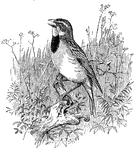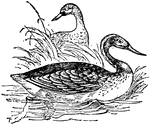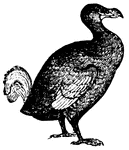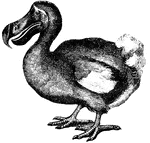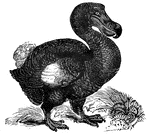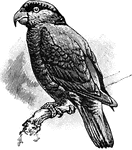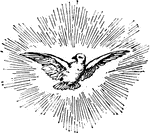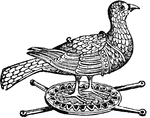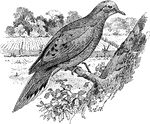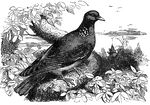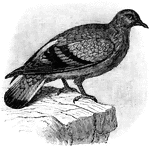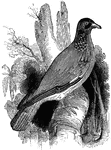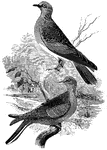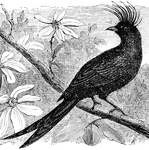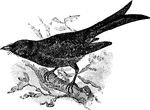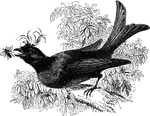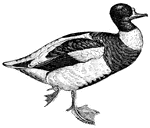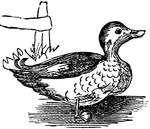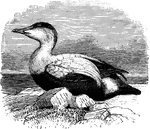154 illustrations of birds including: dacelo, dickcissel, dipper, diver, dodo, domicella, dotterel, dove, dovekie, drongo, duck, dunlin, eagle, egret, emu, epimachus, and erne

Bill of Gadwall
The bill of the Gadwall Duck, showing the comb-like 'teeth' that they are known for.

Common Dotterel
"It is only requisite to exhibit the outward signs of bacchanalian excitement, and the birds will be…

Black-Banded Dacelo
The black-banded dacelo, found around the Cape of Good Hope. They are known for feeding on earthworms,…
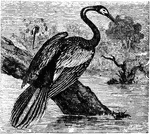
Darter
"In all its movements this neck is a counterpart of the reptile, and imitates its undulations; therefore…
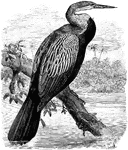
Indian Darter
"The Indian Darter (Plotus melangaster) or snake-bird of tropical and subtropical America, ranging northwards…
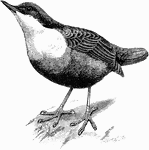
Dipper
"Cinclus aquaticus, Dippers, the colour above is normally greyish-black or brown; the lower parts are…
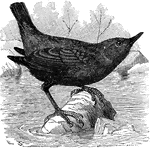
American Dipper
A bird that spends most of its time in the water. It has a thick body; very short tail of 12 rectrices…

American Dipper
"Adult, in summer: Slaty-plumbeous, paler below, inclining on the head to sooty-brown. Quills and tail-feathers…
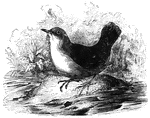
Black Dipper
The black dipper, also known as the European water-ousel, feeds on small shellfish and insects.
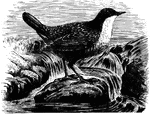
European Dipper
"Bill shorter that head, slender and compressed throughout, higher that broad at the nostrils, about…
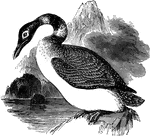
Great Northern Diver
The great northern diver or common loon is a large member of the family, Gaviidae.
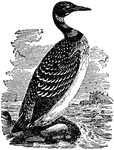
Great Northern Diver
The Great Northern Diver, known in North America as the Common Loon (Gavia immer), is a large member…

Great Northern Diver
The Great Northern Diver, Colymbus glacialis, "...is black above, with belts of white spots making a…
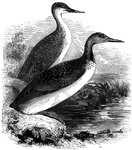
Red-throated diver
"The red-throated diver, twenty-four inches long, is common to Europe and America. This is called scape-grace…
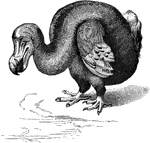
Dodo
"The Dodo, ...was an immense Pigeon-like bird bigger than a Turkey, with an aborted keel to the sternum…

The Dodo
The Dodo, indigenous to Mauritius, should be placed in the first rank of extinct birds. "It was observed…
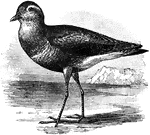
Dotterel
It breeds in high latitudes and performs extensive migrations twice a year, appearing in temperate regions…
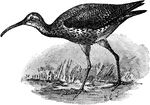
Dough Bird
It has a long slender bill only about two inches long. It is abundant during its migrations, and is…
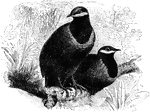
Blue-headed Quail Dove
"Starnaenas cyanocephala. Blue-headed Quail Dove. Crown rich blue bounded by black; a white stripe under…

Carolina Dove
"Zenaidura carolinensis. Carolina Dove. Mourning Dove. Wild Dove. Upper parts, including middle tail-feathers,…
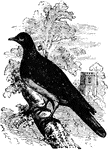
European Ring Dove
Columba palumbus. European Ring Dove. Wood Pigeon. Plumage is gray with a pinkish-purplish breast and…
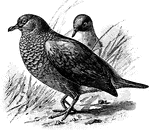
Common Ground Dove
The Common Ground Dove (Columbina passerina) is a bird in the Columbidae family of pigeons and doves.
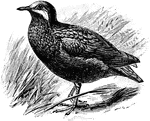
Olive-Backed Quail-Dove
The Olive-Backed Quail-Dove (Geotrygon veraguensis) is a bird in the Columbidae family of pigeons and…
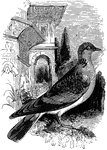
Rock dove
Common to Europe and Asia, the rock dove makes its home among the high rocks of the coast.
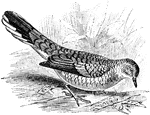
Scaly Ground Dove
The scaly ground dove (Scardafella squamosa) is a species of New World doves in the Columbidae family.
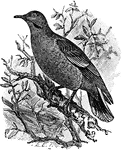
White-Winged Dove
The White-winged Dove (Zenaida asiatica) is a dove whose native range extends from the south-western…
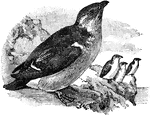
Dovekie
It is abundant in the northern Atlantic and Arctic oceans, congregating to breed in some places in countless…
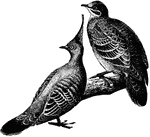
Doves
An illustration of two species of doves. On the left is a crested dove and on the right hand side is…
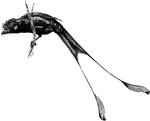
Drongo
"Dissemurus paradiseus, the Drongo, both sexes are typically black, with metallic gloss of blue, purple,…

Duck
The head and throat of the male duck can be emerald green with shots of violet. The female is brown…

Pin-tail Duck Head
"Dafila. Pin-tail Ducks. Tail (in adult male) narrow, cuneate, when fully developed nearly as long as…
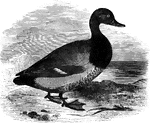
American Scaup Duck
The American scaup duck is common in North America, accidental in Europe. It is also known as the creek…
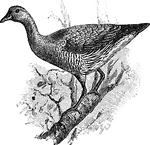
Australian Tree Duck
A duck with a bill longer than its head and curved downward. Its legs are long and fitted with bird…
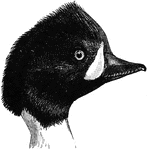
Barrow's Goldeneye
Barrow's Goldeneye (Bucephala islandica) is a sea duck in the Anatidae family of ducks, geese, and swans.…
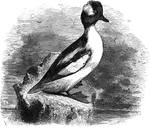
Buffle-Headed Duck
The buffle-headed duck builds its nest in the hollow of trees, and averages about thirteen inches in…
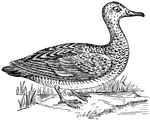
Gadwall
"Gadwall, a rather large fresh-water duck, common in the interior of the United States and breeding…
